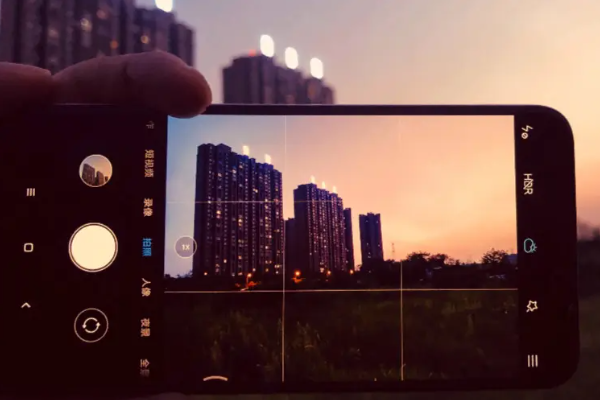Huawei XMAGE imaging technology and BeiDou satellite short message function
BY ETrade Supply | 十一月 17th, 2022 | 0 | 0
Huawei's XMAGE three technological breakthroughs, the image color has become a school of its own
In July, Huawei officially announced the launch of its own imaging brand, XMAGE, to upgrade its imaging technology, style, and experience. The whole system of the XMAGE imaging system.
Take the optical system as an example, in Huawei Mate 50 series equipped with an ultra-optical camera, the use of variable aperture technology, at the physical level to achieve ten adjustable apertures, bringing three optical system technical breakthroughs.
The first is a breakthrough in the process. The entire lens module uses a high-precision component design and assembly process to create a large physical aperture of F1.4. The overall structure of 23 precision components, including a high-precision ring magnetic field micro-controlled motor, physical aperture blade, and other innovative original parts, has a maximum precision of 5-10μm micron level.
The second is a breakthrough in the ability to control the amount of light. To achieve the technical solution of variable aperture, matching the right amount of light intake for different light environments, which in turn brings the best imaging effect, is the technical difficulty of the optical system. In order to achieve accurate control of light intake, Huawei pioneered a high-precision full-process calibration and testing scheme. After more than 20 versions of blade design and verification, coupled with a set of high-precision drive control algorithms, the six metal aperture blades through the physical opening and closing, achieve the effect of a 10-stop aperture change.
The third is the breakthrough in aesthetic design. Highly reliable aesthetic design is the product DNA of the Huawei Mate series, Huawei pioneered the blade appearance integrated metal coating scheme, the blade using a new material of high-mode bright high-strength aluminum, further reducing the weight of the structure, to achieve 20 times the strength increase.
In the Huawei Mate 50 RS Porsche design, a 3.2mm long mechanical travel motor is also introduced, and for the first time in the industry, a dual-mirror cluster internal focusing architecture design is adopted, which can use the movement between mirror clusters to focus for secondary calibration and further enhance the optical resolution in macro mode.

Huawei has also established its own color imaging style in the XMAGE image style. The image color research team established by Huawei brings together seven Huawei research institutes from China, Finland, Japan, the United Kingdom, and other parts of the world, including art, psychology, optics, color science, and other eight research fields, using 3.3 million + Huawei New Image Contest user submissions as samples to establish Huawei's exclusive image style, which is characterized by: a sense of authenticity, permeability, translucency In terms of color, Huawei has also joined hands with the Huawei New Image Contest to create a new image style.
In terms of color, Huawei also joined forces with the Institute of Color Research at Tsinghua University's Art and Science Research Center to refine the color tone of the XMAGE style based on the theoretical foundation of the "color science" system. On the basis of XMAGE's original color, it does not change the inherent color of the object, but only adjusts the saturation and brightness in two dimensions, presenting a bright and vivid tone while preserving the content of the photo, forming a complete and systematic color tone system. Technical challenges overcome by Beidou satellite communication
The story behind the Beidou satellite messages of Huawei's Mate 50 series was also introduced at the conference. In July this year, the Beidou-3 short message communication function gradually matured, allowing for two-way message generation and reception without a communication network. At the technology development stage, popular smartphones wanting to support BeiDou satellite messaging face three major challenges.
High loss, Huawei is realizing short message communication with the GEO satellite of BeiDou-3 system, which has a wide coverage of single star and can better anti-masking. However, the operational orbit altitude is about 36,000 km, and the higher the satellite, the greater the transmission loss of the transmitted signal, making it more difficult for the ground-transmitted signal to be accepted by the satellite.
Low power, high orbital satellite transmission signal loss, and the need for ground equipment signal transmission power, but the thin and light body of the phone determines the power to transmit the device must be very small.
Low gain, compared to the conventional satellite phone's huge transceiver antenna, the gain of the cell phone antenna equipment is also very low.
In order to solve these technical problems, Huawei has built a set of communication protocols to meet the needs of cell phone satellite communication, which includes a new communication system, protocol stack, and application underlying protocols. First of all, facing the problem of insufficient hardware power, Huawei developed the Mate 50 series, including high-power PA, low-loss RF links, and antenna design with consistent transmitting and receiving directional maps, which effectively improves the long-distance communication power of cell phones and reduces the signal loss of communication between cell phones and satellites.
At the algorithm level, Huawei also designed a new codec algorithm and introduced a high-gain Polar coding scheme, thereby reducing interference and noise during satellite communication transmission and improving the signal decoding rate.
After completing the technical preparation, Huawei has also established a complete closed loop of testing and verification in order to verify the usability of satellite communication technology. A complete set of Beidou-3 end-to-end satellite-ground fusion communication verification systems was established by sending signals to analog satellites through specially designed UX star-seeking guidance and receiving signals using terminal equipment.
From the establishment of the project in December 2019 to the completion of the feasibility analysis in April 2020 to the completion of the laboratory connection in February 2021. After 18 months of off-site testing in 31 provinces and 7 terrain environments, including the Gobi, desert, and uninhabited areas, the Beidou satellite messaging function was finally presented to the public.
Huawei also announced that the Huawei Mate Xs 2 will also support Beidou satellite messaging, and will officially open the public test on November 5.











